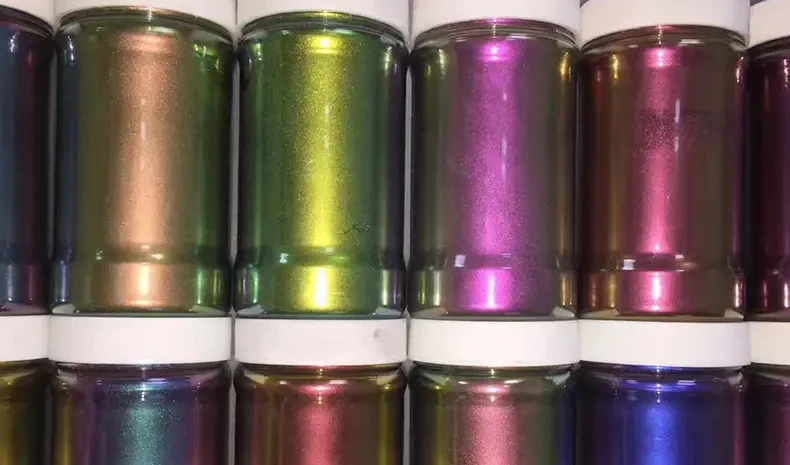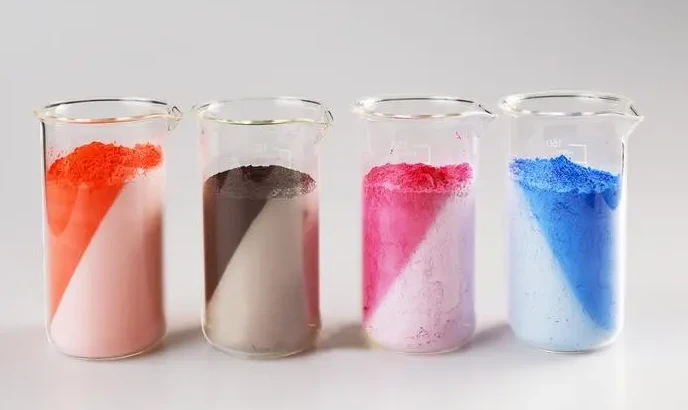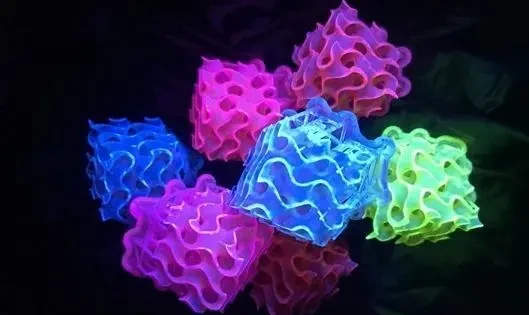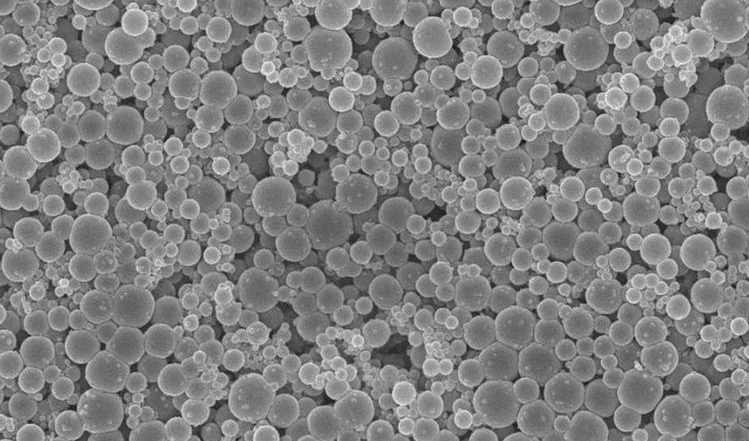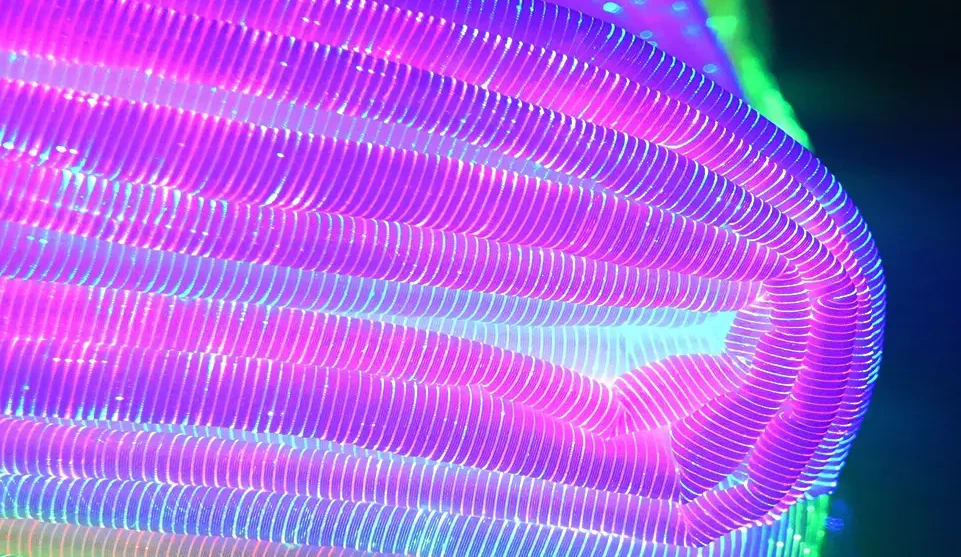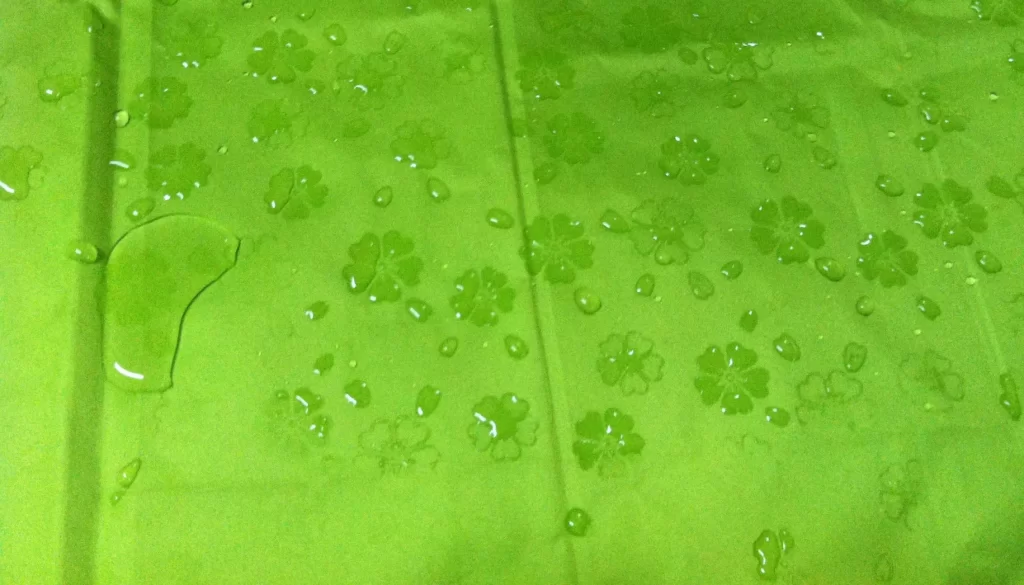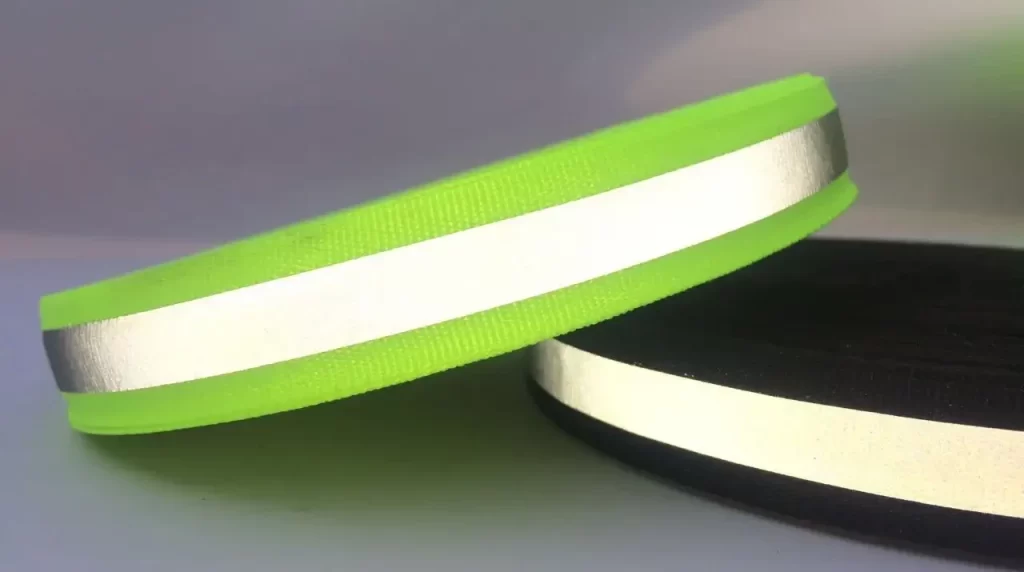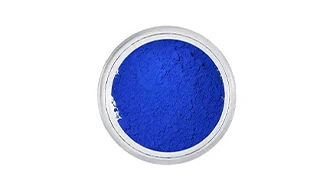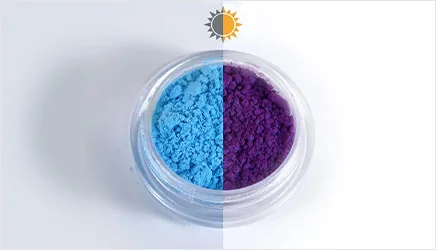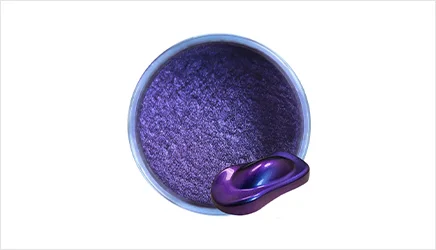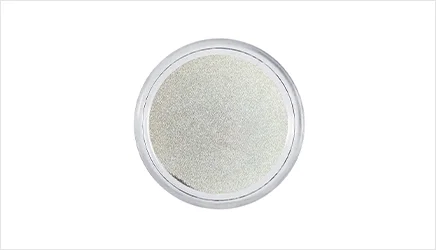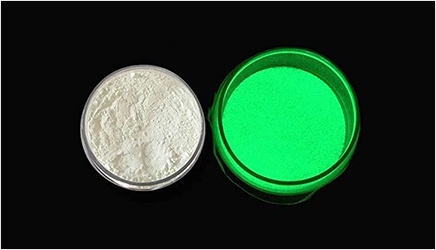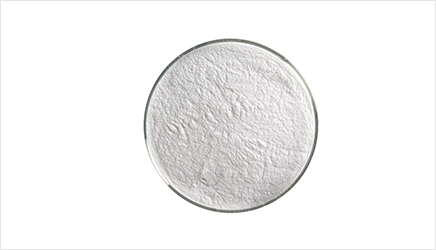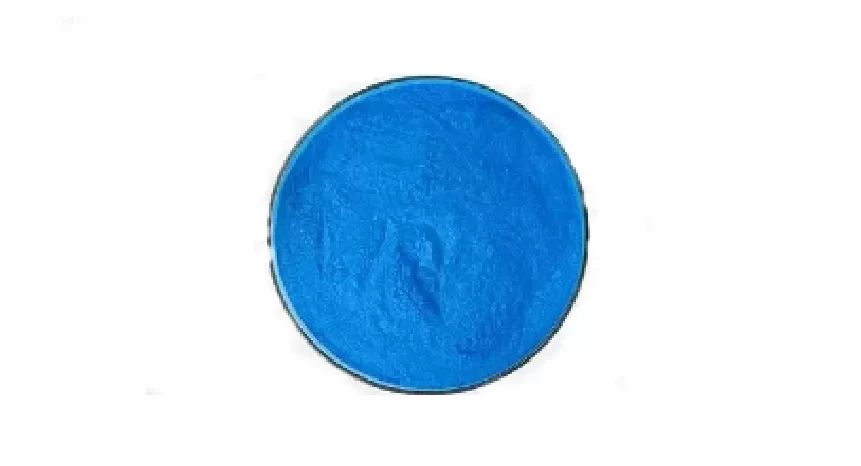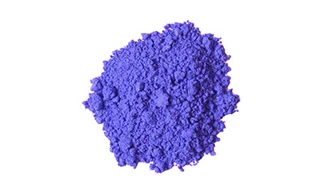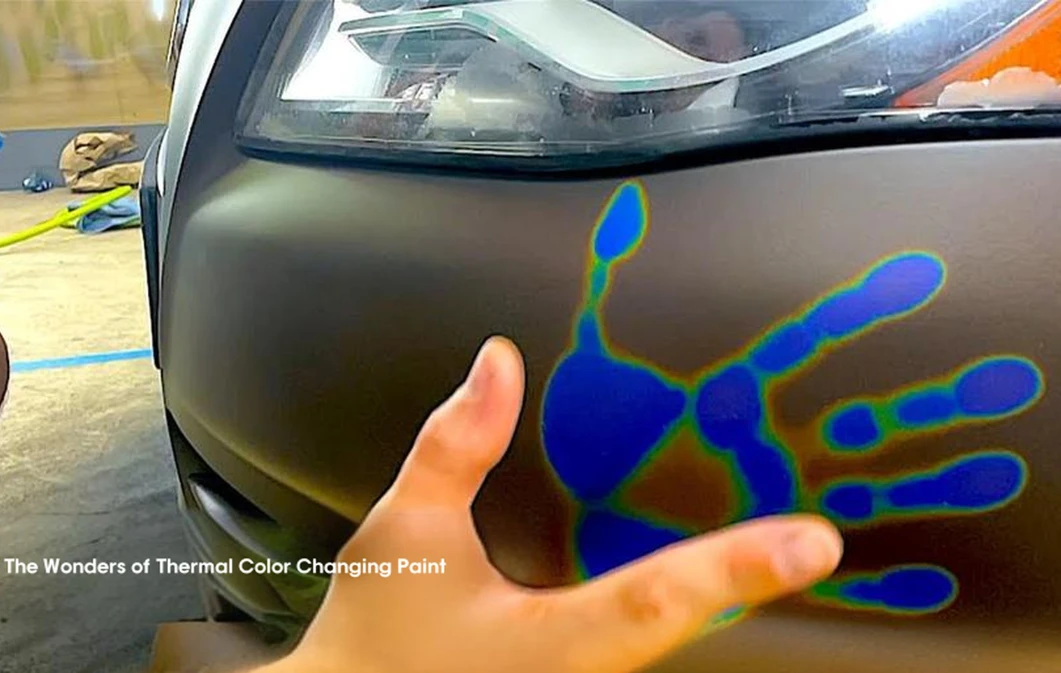Home > Color Shifting Technologies
Color Shifting
Use Color Shift Technologies to Color Your Life
Color Shifting Technologies
Color Shift Pigment Series
Thermochromic Technology
1. The color-changing principle and structure for reversible thermochromic pigments
Thermochromic pigment is a kind of microencapsulation that can change colors in a repeating mode when the temperature goes up and down.
Reversible thermochromic pigment is produced by electron-transfer organic compounds. Electron-transfer organic compounds is an organic luminescence system that is featured with special chemical structure. In certain temperature, when the electrons transfers, the molecule structure of this kind of organic substance will change, thus triggering the change of color. This kind color-changing substance is not only featured with strong color, but also can realize the color change from “colorful to transparent” state to “transparent to colorful state”. This kind of property is not possessed by reversible thermochromic substances featured with liquid crystals and heavy metal complex salts.
There are 15 Primary colors for reversible thermalchromic materials in their colored state:

Except for basic color, we can also configure different colors that change from one to another according to customers’ requirements:
Such as: brown to red, purple-blue to light red, purple-red to light blue, blue to yellow, red to yellow, purple to red, purple to blue, green to yellow, orange to yellow, ect.
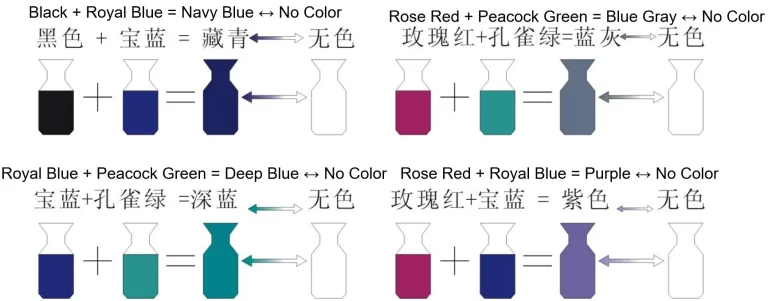
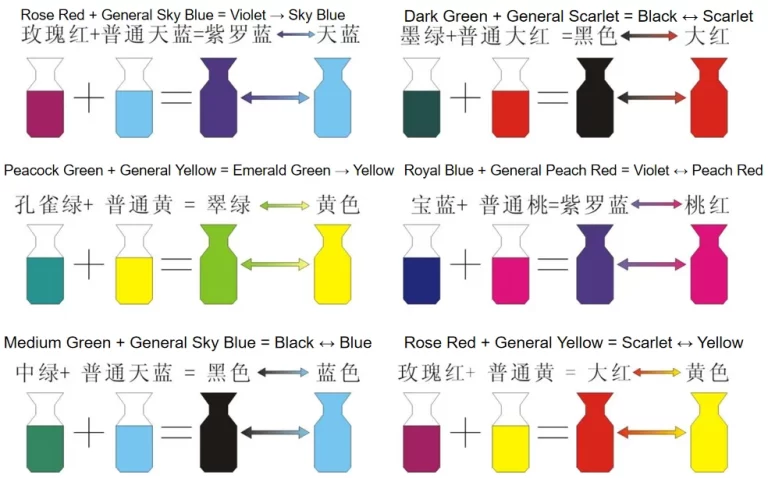
2.Regular temperature for changing color: 18℃、22℃、31℃、33℃、45℃、65℃. Other temperatures for changing color need to be customized.
3.Thermochromic inks can change colors repeatedly when the temperature goes up and down. (Take 31℃ red color as an example. The color will be transparent when the temperature is above 31℃, and red when the temperature is below 26℃)
4.Thermochromic inks/oil paints can be used in products painting, mesh-printing. The products are designed in response to the need of color change at high temperature or low temperature. The materials are generally used in products related to human body temperature test or change of water temperature. They can also be used to prevent counterfeiting.
Application of Thermochromic materials:
1.Dry-up method: (automatically dry, oven-dry, UV to be solidified). When we use this kind of materials, we can use diluents to dilute the materials. When printing wall backdrop, it is suggested to use white or light white series. This series can enhance the degree of the differences of the color change.
2.If silk-mesh printing is needed. The mesh should be 150 ~ 200 treads.
3.The material is applicable to: spray coating, pad printing, transfer printing, offset printing, screen printing, ect. (plastics, ceramics, glass, metal, fabric, paper).
Photochromic Technology
1. Principle for color changes:
Photochromic materials will change color after being exposed by ultraviolet light or sunlight. The color will revert to the original state when the ultraviolet light or sunlight is removed.
2. Primary colors, 4 color: yellow, blue, red, purple. (Transparent to be colorful)
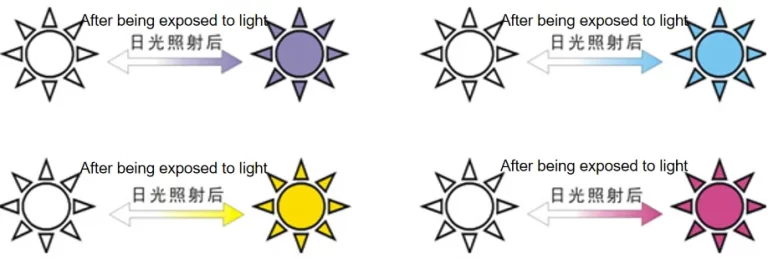
3. The intermixing of primary colors
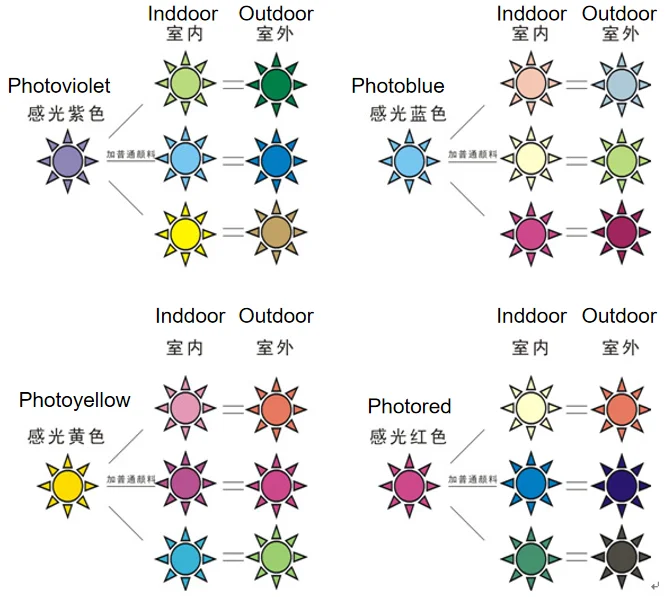
The application of Photochromic materials
(1) Dry-up method: (automatically dry, oven-dry, UV to be solidified). When we use this kind of materials, we can use diluents to dilute the materials. (The water-based oil inks can also be customized and diluted by water) When printing wall backdrop, it is suggested to use white or light white series. This series can enhance the degree of the differences of the color change.
(2) If silk-mesh printing is needed, the mesh should be 150 ~ 200 treads.
(3) Substrates applicable: spray coating, pad printing, transfer printing, offset printing, screen printing, ect. (plastics, ceramics, glass, metal, fabric, paper).
Fluorescent Technology
Anti-counterfeiting fluorescent materials can, being exposed to general visible light, present to be transparent. It can display luminescent colors such as blue, green, yellow, red, when being exposed to 365/254 nm ultraviolet light.
1. Introduction of the Fluorescent materials.
Special fluorophor is white or nearly transparent under visible light source. Under light sources of different wavelengths (254nm、365 nm、850 nm), the fluorophor can display one or more colors. The colors are vivid and can present special effect, such as organic, inorganic and residual colors. Fluorophor marker materials are mainly used in producing identification plastics and anti-counterfeiting inks. The two materials can be widely used in printing important works, such as checks, invoices, money, ect. The marker materials can be used to producing credit cards, ID cards, ect.
2. Fluorescent Color
The color category is rich, including pink, orange, purple, green, yellow, red, blue, white. The colors can be intermixed to generate more colors.
3. Application of Fluorescent materials
(1) Dry-up method: (automatically dry, oven-dry, UV to be solidified). When we use this kind of materials, we can use diluents to dilute the materials. When printing wall backdrop, it is suggested to use white or light white series. This series can enhance the degree of the differences of the color change.
(2) If silk-mesh printing is needed, the mesh should be 150 ~ 200 treads.
(3) Substrates applicable: spray coating, pad printing, transfer printing, offset printing, screen printing, ect. (plastics, ceramics, glass, metal, fabric, paper).
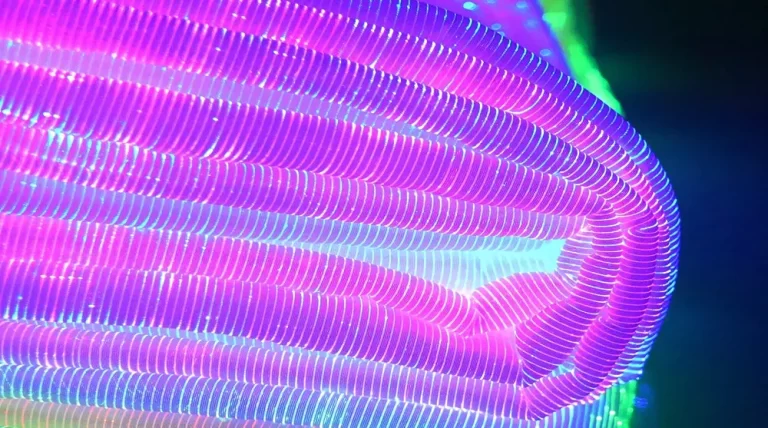
Nighttime Luminescence Technology
1. The form of luminescence
Long-lasting luminous pigments will first absorb various energy and light, converting them into light energy for storage. They then emit light in the darkness. The material doesn’t contain radioactive elements and can be used for many times. It realize luminescence by absorbing various visible light. The material has strong absorption capability for light below 450nm, such as ultraviolet light, sunlight, visible light.
2. Colors for reference:
Various light, such as red light, white light, purple light, sky-blue light, blue-green light, yellow-green light, can be adjusted by adding fluorescent pigment and dye. The color can also be adjusted by using ordinary pigment and dye, but the luminous effect is not that good.
3. Application of luminous materials
(1) Nighttime luminescence material is oil ink. When we use this kind of material, we can use diluents to dilute the material. (The water-based oil inks can also be customized and diluted by water) When printing wall backdrop, it is suggested to use white or light white series. This series can enhance the degree of the differences of the color change.
(2)There is luminous particles in the nighttime luminescence ink. The mesh should be 150 ~ 200 treads.
(3) The nighttime luminescence ink can mix with dyes and pigments to generate more colors. We should choose appropriate ink substrates when printing different works.
(4) The nighttime luminescence ink is applicable to spray coating, transfer printing, screen printing(plastics, ceramics, glass, metal, fabric, paper).
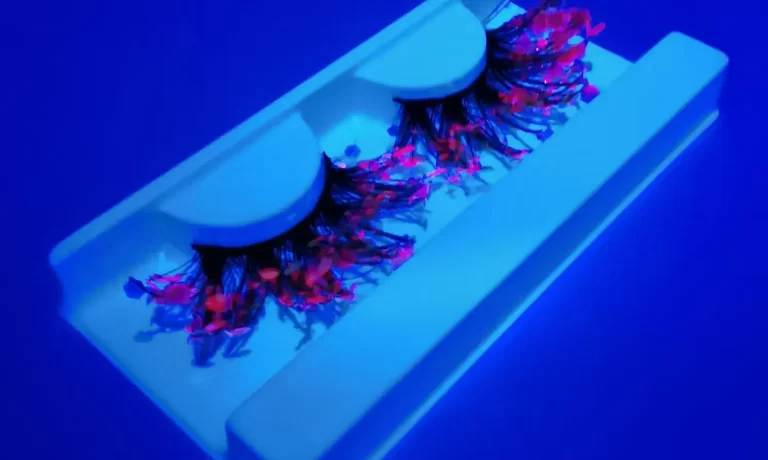
Microencapsulated Fragrant Pigment Technology
There are different fragrances of microencapsulated fragrant pigment technology. The fragrances can last for half years. Hence, that’s why we call it long-lasting fragrant ink.
Long-lasting fragrant microencapsulation is a technology that can, in an open space, gradually emit fragrance by encapsulate the fragrant essence. We can also release the fragrance by pressing the encapsulation using the pressure and thermal energy. The fragrance can last for more than half years.
1. Types of standard fragrance
There are 15 fragrance, including rose, strawberry, honey, grape, sandalwood, lavender, jasmine, lemon, orange, citronella, apple, peach, camphor, mint, ect. You can also customize other special fragrances.
2. The application of materials
(1)Microencapsulated fragrant material is a kind of silk-mesh printing ink. There are two types of this ink: water-based and oil-based ink. Water-based ink can be diluted by water, while oil-based ink can be diluted by diluents.
(2)The color of microencapsulated fragrant material is transparent.
(3)The mesh should be 150 ~ 200 treads.
(4)When we print different works, we should choose appropriate coating and ink substrates.
Attention for the application of ink:
- We should avoid process the microencapsulated fragrant materials at temperature above 140℃.
- When the microencapsulated fragrant materials are exposed to the temperature of 140℃ for 15 minutes, the fragrance intensity will reduce by 15%.
- When the microencapsulated fragrant materials are exposed to the temperature of 140℃ for 10 minutes, the fragrance intensity will reduce by 25%.
Toxicity and Safety:
- Microencapsulated fragrant water-based materials are nonirritant. You don’t need to worry about its safety when handling and operating the materials. Oil-based inks are a little irritant. The irritancy will disappear when the materials dry.
- Microencapsulated fragrant materials doesn’t contain harmful substances that are detrimental to human body. They meet the standards of safety toys and food packaging.
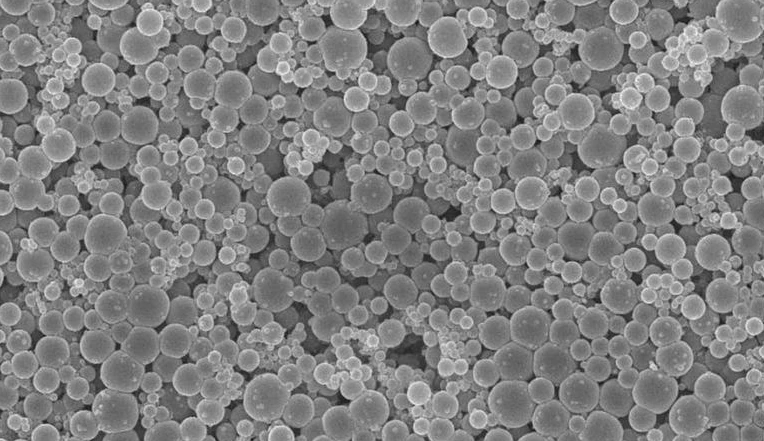
PH-Sensitive Color-Shifting Technology
PH-sensitive color-changing pigment is a kind of pigment that can change color along with the change of PH value in the solution. It is usually composed of pigment molecule and PH sensors. PH sensor will undergo structural change when the PH value in the solution changes. This will lead the change of the pigment’s color. The pigment is widely used in the areas such as acid-base indicators, water quality monitoring.

Oxygen-Sensitive Color-changing Technology
Oxygen-sensitive color-changing pigment is a kind of pigment that can change color according to the change of oxygen intensity. This kind of pigments usually contains materials that can transit metal ions. The color will change when then oxygen intensity changes and and the ions charge alters. This pigment can be widely used in the sectors such as oxygen measurement and oxygen sensors, ect.
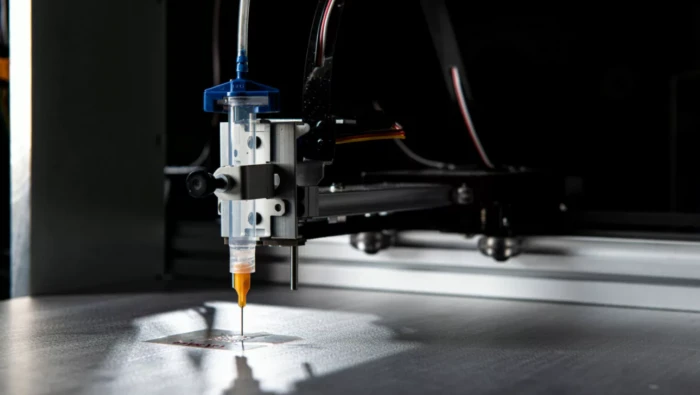
Hydrochromic Technology
There are many colors for hydrochromic materials, such as brown, pink, yellow, white, ect. These colors become transparent when contacting with water. The underlying color will present then. Currently, there is only white color of hydrochromic inks in the market. However, our company can produce tailored colors according to customers’ requirement. The tailored color is only provided to the defined customers, so that the color can possess unique anti-counterfeiting feature. Customers are independent in the color and they are not affected by each other. The color of letters or graphs printed by this ink can revert back to be transparent when contacting with water. Successively, the ink will reveal the underlying color. The ink has sound adhesive and changing effect when printed on plastic films, regular cardstock, sticker papers, ect.
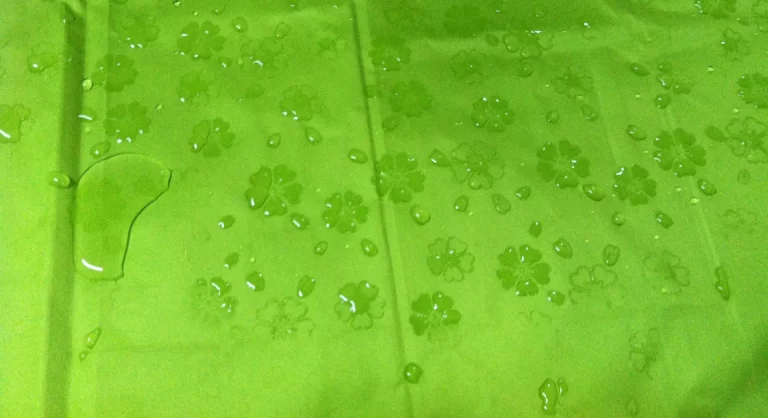
Optical Color Shifting Technology
There are many colors for hydrochromic materials, such as brown, pink, yellow, white, ect. These colors become transparent when contacting with water. The underlying color will present then. Currently, there is only white color of hydrochromic inks in the market. However, our company can produce tailored colors according to customers’ requirement. The tailored color is only provided to the defined customers, so that the color can possess unique anti-counterfeiting feature. Customers are independent in the color and they are not affected by each other. The color of letters or graphs printed by this ink can revert back to be transparent when contacting with water. Successively, the ink will reveal the underlying color. The ink has sound adhesive and changing effect when printed on plastic films, regular cardstock, sticker papers, ect.
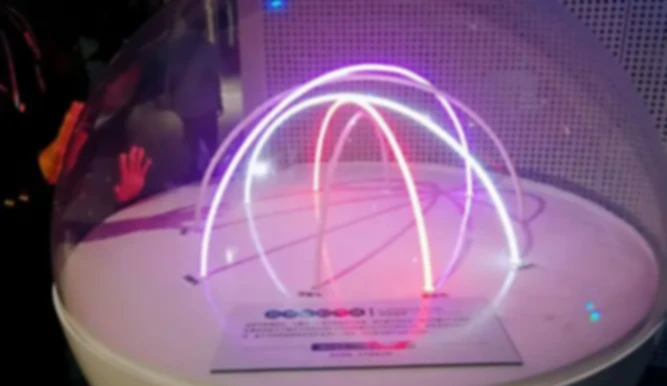
Water-Dispersive Technology
Water-dispersive material is produced by using unique technology. It belongs to irreversible anti-counterfeiting ink. The letters of graphs printed by this ink will gradually infiltrate and then disperse upon contacting with water. The letters or graphs will gradually turn to be blurred. After the water dries up, the dispersed color will not revert back to its original state. When the identification mark, printed by this kind of ink, is tested, the mark can not be used repeatedly. There are many colors of the ink, including black, yellow blue, red, ect.
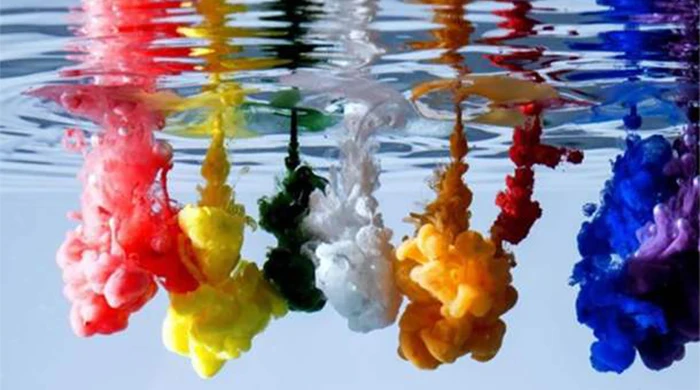
Infrared Excitation Technology
The infrared excitation ink will present glaring visible light when exposed to 980nm infrared light. When the ink is exposed to daytime light and sunlight, it won’t reveal color, and it is transparent. Currently, in the commercial market, only infrared red and infrared green can excite ink. However, our company will produce infrared excitation ink with different color based on customers’ requirements, such as purple, blue, green, red, ect. This kind of technology is of high capability of anti-counterfeiting. Equipped with high technology, this kind of inks is not easy to be emulated by other companies. What’s more, the identification instruments used now is convenient and easy to operate. The technology is now widely used in the products of anti-counterfeiting. It is now used in the tobaccos, invoice and renminbi, ect.
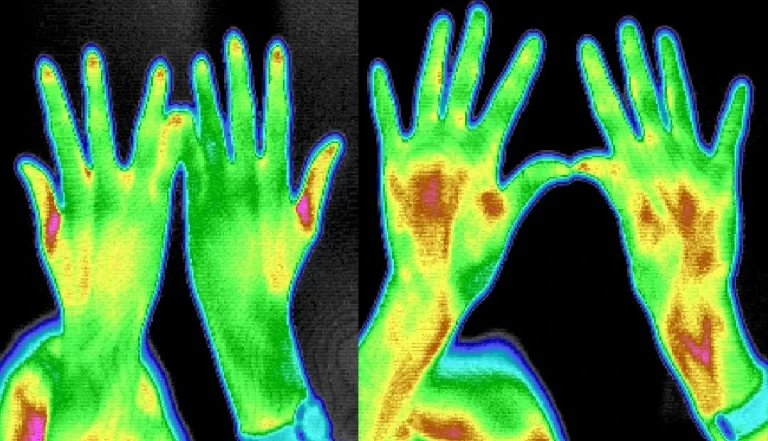
Chemical Color Shifting Technology
This is a kind of special ink technology. It is a chemical substance that can undergo chemical reactions when altering, erasing using a special solvents. It can be used to produce a ink that can undergo color development, color change and decolorization.
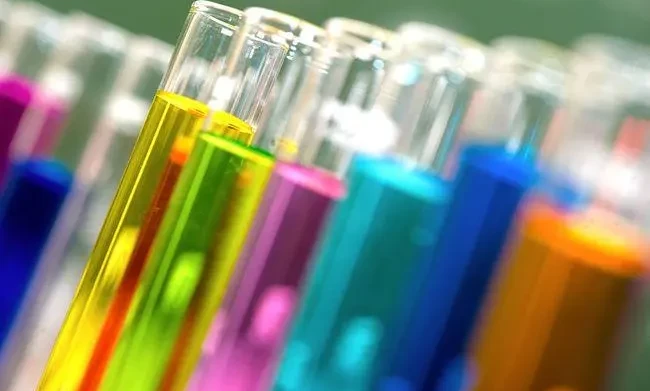
Multi-effect Anti-counterfeiting Technology
Multi-effect anti-counterfeiting material is a kind of anti-counterfeiting ink. It is produced with special technology by adding corresponding ink in substances that are composed by several anti-counterfeiting materials. This formula covers comprehensive knowledge that spans multi-disciplinary areas, such as measurement and control technologies, material science, physics, optics, nuclear energy, chemistry, ect. The formula of the ink can be adjusted arbitrarily. Various inks are produced under standard chemical processes, such as roller pressing, blending, grinding, color matching, ratio mixing, ect. What’s more, the manufacturing process and the formula contains high technology. Thus, it’s difficult for anybody, even the expert of this sector, to master the technology. The typical counterfeiting methods can replicate the technology by no means. There are various of multi-effect anti-counterfeiting inks, such as fluorescent + thermochromic + infrared, infrared + thermochromic, dual-wavelength fluorescent, fluorescent + infrared, multi-stage thermochromic, thermochromic + fluorescent, ect. Our company will develop the inks according to customers’ needs.
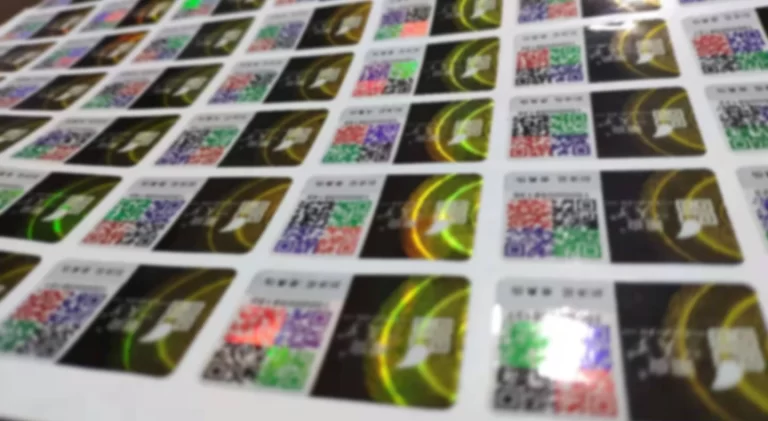
Table of Contents
- Color Shifting Technologies
- Color Shift Pigment Series
- Thermochromic Technology
- Photochromic Technology
- Fluorescent Technology
- Nighttime Luminescence Technology
- Microencapsulated Fragrant Pigment Technology
- PH-Sensitive Color-Shifting Technology
- Oxygen-Sensitive Color-changing Technology
- Hydrochromic Technology
- Optical Color Shifting Technology
- Water-Dispersive Technology
- Infrared Excitation Technology
- Chemical Color Shifting Technology
- Multi-effect Anti-counterfeiting Technology
We are Ready to Support Your Fluorescent Material Projects

